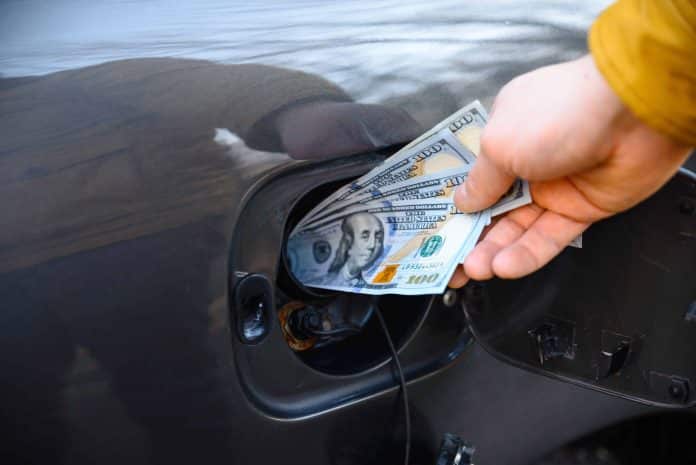
It comes as no surprise that gas comes at a high cost. Most Americans have always been dealing with the issue of gas prices, but it seems that the issue is getting worse with each passing day. As of September 2022, the federal average price for regular gas was at $3.809. However, as the quality of gas increases, so do the prices. For example, the federal average price for premium gas was at $4.548.
As gas prices remain high, many Americans are constantly struggling to stay on top of it. The federal government recognizes that individuals are going through financial hardship. This is why they have some new proposals. Currently, Congress is suggesting both stimulus checks and gas rebates. There have been three bills that could resolve this issue.
Three Bills To Help Out, But What Are They?
With the constant rise in gas prices, a lot of people are not aware of how this can significantly influence their lives on a daily basis. To provide insight, according to CBS, the rise in gas prices could probably cost people in the United States up to $2,000. Other than feeling the impact on personal effects, there are also bigger effects that Americans should expect. This includes effects on spending, an increase in plane tickets, how companies hire employees, and so on.
Currently, there is no certain relief option on the increasing gas prices. However, there are three bills that you could see take place in the future. These bills or proposals are:
- First Proposal: American Citizens Receive up to $360 Per Year
- Second Proposal: Households Receive up to $300 Per Month
- Third Proposal: A Refundable Tax Credit Every Month
First Proposal: American Citizens Receive up to $360 Per Year
There is a proposal that Congress is currently working on, which is the Big Oil Windfall Profits Tax Act. This bill plans to provide Americans with an amount of up to $360 per year. The good thing is that this can actually happen due to the fact that the bill would place a tax on each barrel, but not just any barrel. The taxes will be imposed on barrels that are worth 50% of the difference between the prices of an oil barrel now and the average price of an oil barrel in pre-pandemic levels (2015-2019). This applies to import or production companies that have at least 300,000 barrels per day. The main goal of this proposal is to “curb the profiteering” of oil corporations and to offer Americans financial relief.
Let us give you an example since it might be a little confusing to understand. If oil costs about $120 per barrel, then this bill could get together $45 billion. These funds can lead to a quarterly rebate of the following:
- $240 per year for single filers
- $360 per year for joint filers
Second Proposal: Households Receive up to $300 Per Month
The second proposal is a bill that would support households with an amount of up to $300 per month for the remainder of the year. However, to receive these payments, the national price of gas on average must remain above $4. This proposal is the Gas Rebate Act and could provide households with:
- $100 for single filers per month that earn up to $75,000
- $100 for joint filers per month that earn up to $150,000
- For at most two dependents, households will receive $100 per dependent
A single filer that has two children or joint filers that have two children can expect to receive an amount of up to $300 per month. This is thanks to representatives of California, Connecticut, and Illinois, who were the ones who proposed this bill.
Third Proposal: A Refundable Tax Credit Every Month
The final proposal is the Stop Gas Price Gouging Tax and Rebate Act. Through this act, oil corporations would be required to make a one-time payment of 50% windfall profit tax on any adjusted taxable income (ATI) in 2022. The ATI must be over 110% of their average pre-pandemic ATI (which means for the years between 2015 to 2019). From this tax, any revenue that is generated would be provided to consumers. It would be provided as a monthly tax credit that’s refundable. Despite that how much a person would get has not been decided, it will probably depend on how much revenue was generated.
Alternative Stimulus Options for Increasing Gas Prices
Other than the three national bills mentioned above, there are other options that you may be able to consider. Currently, California also offers its own stimulus relief. The governor of California, Gavin Newsom, offered the option of an $11 billion relief program. This stimulus program can provide Californians with the ability to properly manage the increasing prices of gas. Through this stimulus relief, vehicle owners that are currently registered could receive $400 for a maximum of two registered automobiles. Other than offering payments to Americans, it also offers free public transportation for residents for three months! The best thing about this option is that there is no income restriction for this proposal.
Despite the fact that California is the only state that is offering a way to help out residents on the issue of gas prices, you never know what you might find later on. You should stay on top of your state’s current news outlets. Your state might follow in California’s footsteps and offer assistance, too! Make sure you stay updated on additional stimulus options that could happen in your state.
The Final Verdict
There is no doubt that gas is an important aspect for most Americans. With the increase in gas prices, Americans could expect to spend an additional $2,000. On the other hand, policymakers in Congress recognize the struggle and are trying to find a solution. That is where the three proposals come into play, which are:
- First Proposal: American Citizens Receive up to $360 Per Year
- Second Proposal: Households Receive up to $300 Per Month
- Third Proposal: A Refundable Tax Credit Every Month
Other than these three bills, there might be more state relief options that show up. California is one of them! The golden state offered its own version of stimulus relief to help Americans manage the increasing gas prices. You should definitely keep an eye out and see if your state might do the same. You never know, there might be a proposal that your state is working on. Currently, there is no official approval on these plans. However, there might be a possibility of its approval–let’s try and stay positive. This could help low-income Americans receive some financial support for these additional expenses.


















